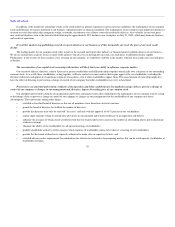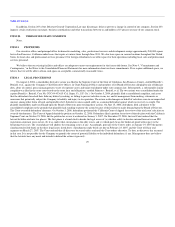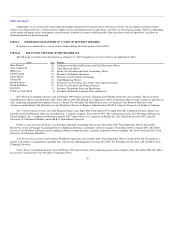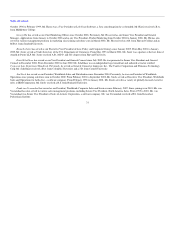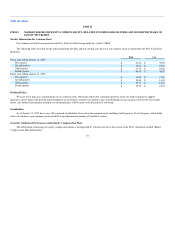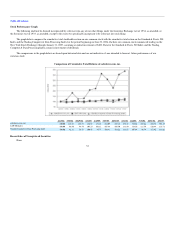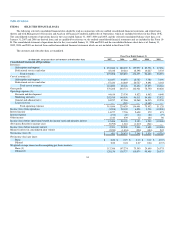Salesforce.com 2006 Annual Report Download - page 41
Download and view the complete annual report
Please find page 41 of the 2006 Salesforce.com annual report below. You can navigate through the pages in the report by either clicking on the pages listed below, or by using the keyword search tool below to find specific information within the annual report.
Table of Contents
our domestic and international selling and marketing activities, building brand awareness and sponsoring additional marketing events. We expect that in the
future, marketing and sales expenses will increase in absolute dollars and continue to be our largest cost.
General and Administrative. General and administrative expenses consist of salaries and related expenses, including stock-based expenses, for finance
and accounting, human resources and management information systems personnel, legal costs, professional fees, other corporate expenses and allocated
overhead. We expect that in the future, general and administrative expenses will increase in absolute dollars as we add personnel and incur additional
professional fees and insurance costs related to the growth of our business, international expansion and operations as a public company, including the
continuing cost of our compliance with Section 404 of the Sarbanes-Oxley Act.
Stock-Based Expenses. Our cost of revenues and operating expenses include stock-based expenses related to option and stock awards to employees and
non-employee directors. As described below, on February 1, 2006 we adopted the provisions of Statement of Financial Accounting Standards No. 123
(revised 2004), Share-Based Payment, or SFAS 123R, which requires companies to expense their stock option awards. We adopted SFAS 123R using the
modified prospective transition method and therefore we have not restated results for prior periods. These charges are significant and are reflected in our
financial results.
Prior to February 1, 2006, we recognized stock-based expenses related to options and warrants issued to non-employees and option grants to employees
in accordance with Accounting Principles Board Opinion No. 25, Accounting for Stock Issued to Employees, or APB 25. Under APB 25, the compensation
expense of stock options to employees was measured based on the difference in the deemed fair value of our common stock and the exercise price of the
option on the date of the grant These differences occurred prior to our June 2004 initial public offering.
Joint Venture
In December 2000, we established a Japanese joint venture, Kabushiki Kaisha salesforce.com, with SunBridge, Inc., a Japanese corporation, to assist us
with our sales efforts in Japan. As of January 31, 2007, we owned a 65 percent interest in the joint venture. Because of this majority interest, we consolidate
the venture's financial results, which are reflected in each revenue, cost of revenues and expense category in our consolidated statement of operations. We
then record minority interest, which reflects the minority investors' interest in the venture's results, exclusive of intercompany charges. Through January 31,
2007, the operating performance and liquidity requirements of the Japanese joint venture had not been significant. While we plan to expand our selling and
marketing activities in Japan in order to add new customers, we believe the future operating performance and liquidity requirements of the Japanese joint
venture will not be significant.
Critical Accounting Policies and Estimates
Our consolidated financial statements are prepared in accordance with accounting principles generally accepted in the United States. The preparation of
these consolidated financial statements requires us to make estimates and assumptions that affect the reported amounts of assets, liabilities, revenues, costs
and expenses, and related disclosures. On an ongoing basis, we evaluate our estimates and assumptions. Our actual results may differ from these estimates
under different assumptions or conditions.
We believe that of our significant accounting policies, which are described in note 1 to our consolidated financial statements, the following accounting
policies involve a greater degree of judgment and complexity. Accordingly, these are the policies we believe are the most critical to aid in fully understanding
and evaluating our consolidated financial condition and results of operations.
38


